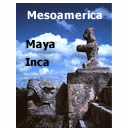Ambassadors of the Jungle
These mysterious lands would seem to rise out of the clouds of the highlands, situated in the east of the island of New Guinea, to the North of Australia. The western half of the island is Irian Jaya, part of Indonesia, and the eastern half is Papua New Guinea. The country includes over 1400 islands, both large and small. In PNG, as this country is properly known, there are around 1000 distinct ethnic groups speaking over 800 different languages.
Sailors who did find themselves sailing close to these coasts told how the natives had attacked them from the cliffs, leaving the decks of their ships covered in arrows and spears and crew members wounded. New Guinea was a remote place that no one dared approached and so it remained unexplored for many years. In fact, until the start of the 19th century, when the English and the Germans took possession of some coastal areas, New Guinea did not even appear on maps of the world.
And here in the highlands, there was no contact with the natives until the 20th century, 1930 to be precise, when Michael Leahy and Michael Dyer, searching for gold, climbed the eastern flanks and discovered a million people belonging to over 400 different tribes. This region is very rugged with a series of mountains reaching heights of up to 4000 meters and forming numerous valleys of dense vegetation, where the different ethnic groups live practically isolated from each other.
The majority of the villages are inhabited by just one family or a single clan. The houses are made of bamboo with roofs of palm leaf. Yam, yucca, maize and sweet potatoes make up their daily diet. The main source of protein comes from the pigs, which they take great care of. They live in an enclosure adjoined to the house, and are a sign of their wealth. The houses are divided into different rooms, compartments separated by walls of woven bamboo. Another source of protein is fish, which they catch in the many rivers in the region. Without a doubt, the rough highland terrain and the extreme warlike nature of these tribes, always in conflict with their neighbors, have contributed to the great ethnic variety we still find today.
Each group decorates their bodies in different ways with specific characteristic colors and designs. They paint themselves for many different ceremonies, but perhaps the most typical is the "Sing-Sing", a ceremony at which they dance and sing. "Sing-Sings" are organized to celebrate many different things, though some take place on specific days each year, and for these many different tribes come together, arriving from even the most remote villages.




i love those documentales! so amazing thank you
I love the Bold Color they use in their face paint.